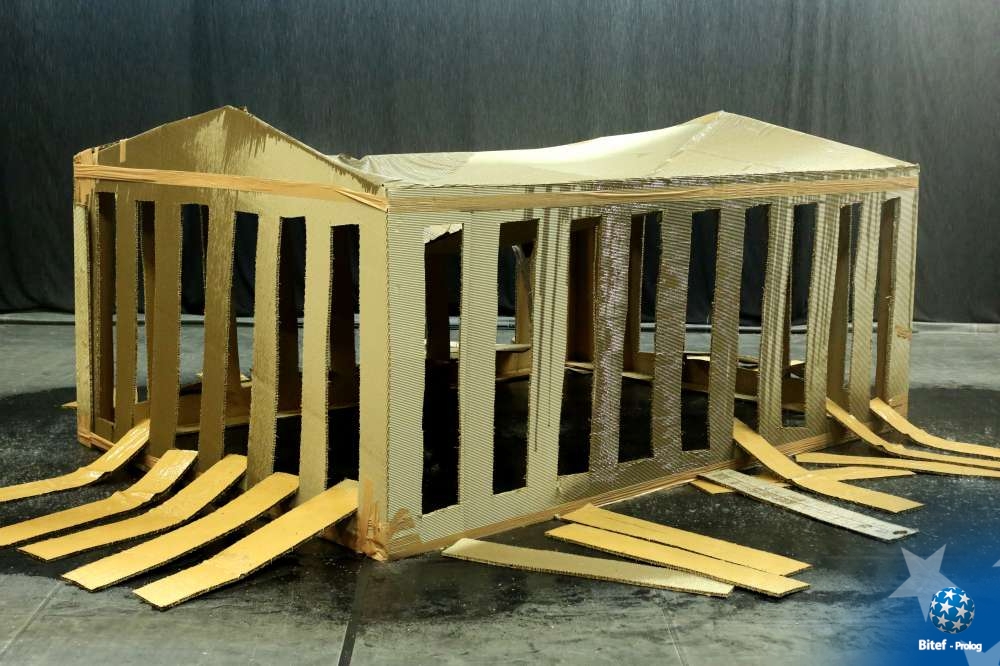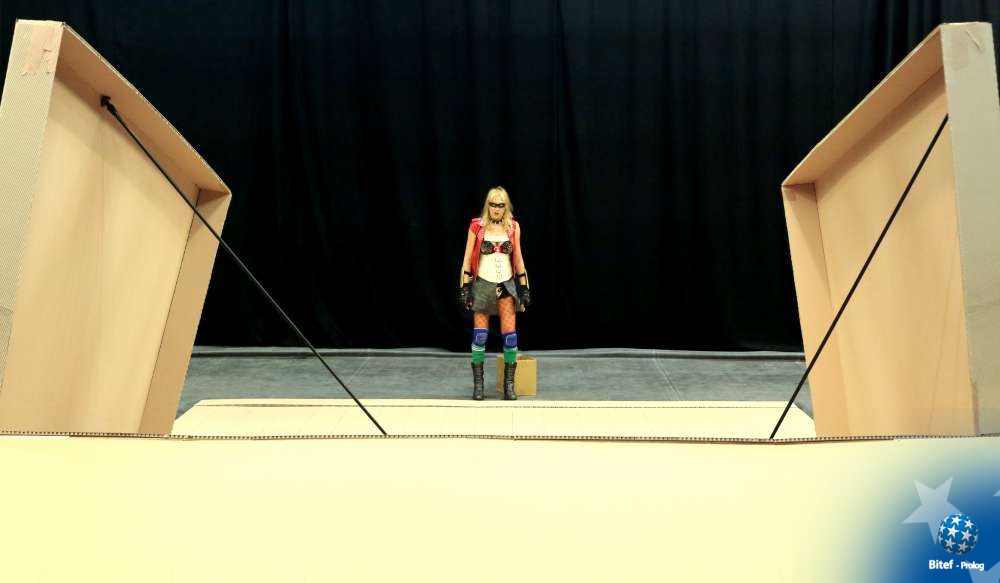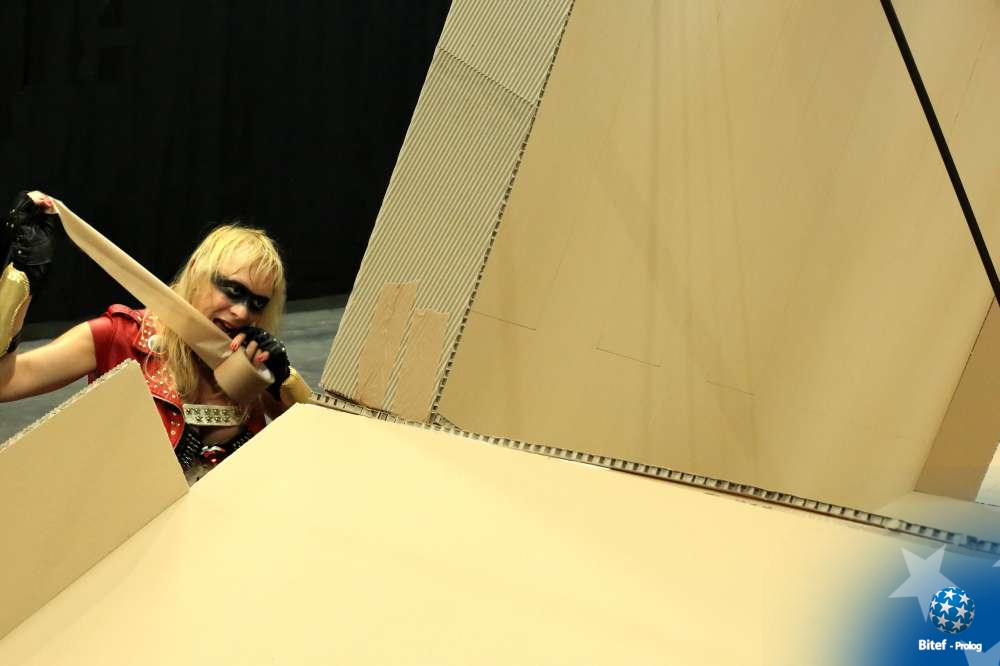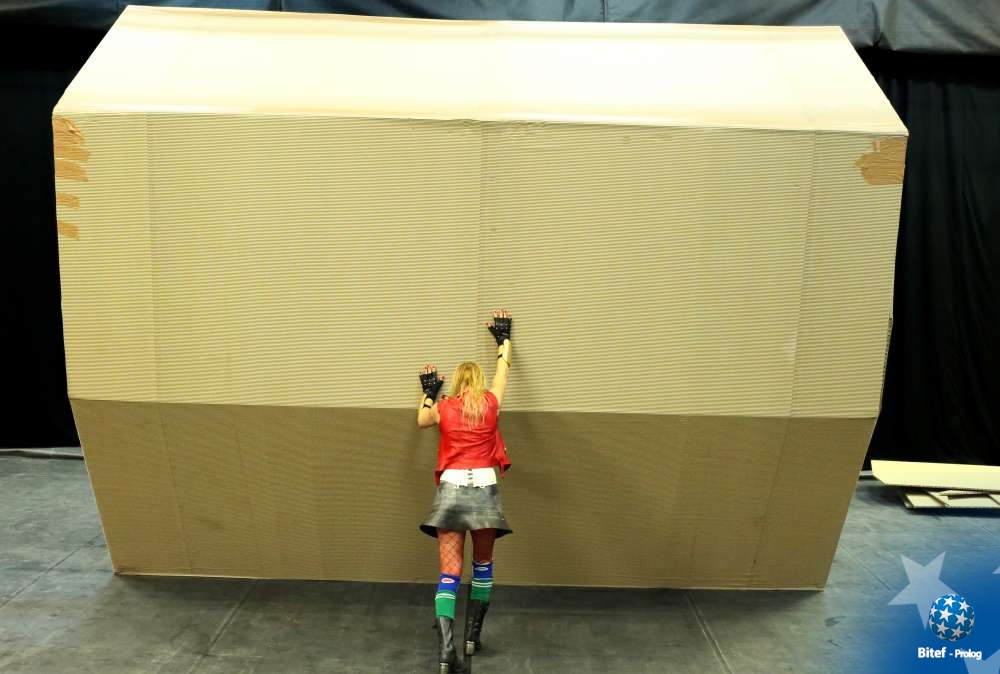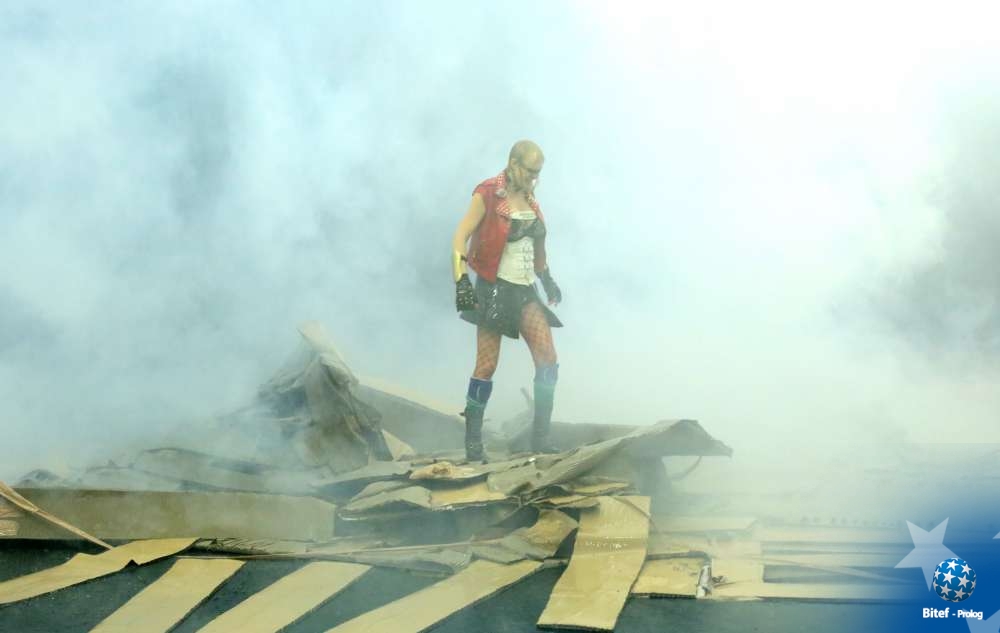About the production
In order to be able to engage their troops on European soil against the Axis powers, the Allied troops employed the defence strategy of carpet bombing. My maternal grandfather was one of the victims when Nantes was carpet bombed by the Allies in 1943. During my childhood, the image and consequences of bombs didn’t seem real to me; bombs were just the stuff of fantasy, as they were for many children. Only much later in my life, when I realized we were not laying flowers at my grandfather’s grave but instead going to visit a faceless mass grave, did I understand the terrible infamy of bombs. Maybe it was at that moment that my mind stumbled across the words “Marshall Plan”, the program set up to rebuild Europe: organize mass destruction and then manage the reconstruction of war-devastated cities, following the model of a pre-fabricated house and a rewritten urban development plan. Build a “Marshall” village out of made-to-measure cardboard, the same way we put up a series of tents for refugees.
Author
PHIA MÉNARD (1971), having seen Jérôme Thomas’ show Extraballe in 1991, felt drawn to performing arts and began training in modern dance, mime, acting, and juggling. In 1994 she joined Thomas’ company, performing in Hic Hoc. During the tours she felt a desire to write for the stage, and she defined her personal vision of contemporary art forms. In 1998, she founded the company Non Nova. It was with her solo show Elevator, Phantasmagoria for elevating people and burdens (Ascenseur, fantasmagorie pour élever les gens et les fardeaux), created in 2001, that she first gained recognition and critical acclaim as a creator of performance art.
In 2008, she revealed her new gender identity and her desire to change sex, which influenced her artistic career from then on.
Her career took a new direction with the project I.C.E. - Injonglabilité Complémentaire des Eléments (Complementary Unjugglability of the Elements), consisting of a creative, intellectual and imaginative approach around the notion of transformation, erosion and the sublimation of natural matter and elements. In the following period, she created a number of shows which toured worldwide, but also initiated research into questions of gender and mood, named In the Mood with the philosopher Beatriz Preciado. In 2014, she received the decoration of Chevalier de l’Ordre des Arts et des Lettres from the French Government. A very prolific period ensued, during which she went on to create her own shows but also to cooperate with a series of troupes and theatres.
In 2017 she created Immoral Tales - Part 1: The Mother House (Contes Immoraux -Partie 1: Maison Mère).
From the reviews
Her costume, which is strongly reminiscent of the film figure from Blade Runner, fits in with this systematic or robotic design language. Like the replicants in the film, she is in search of humanity that may be hiding somewhere between executing commands and the same processes. And like in the movie here comes the rain at the end.
Wera Hippesroither, PW-Magazine
The laughter gradually dies out. The spectators, initially amused by the construction meticulously carried out, remain speechless in the state of a palpable tension. Water falls from the ceiling onto the makeshift house which was carefully built. The roof collapses into the structure, the columns get twisted. The ensuing chaos is shocking, fascinating, poignant. Even without words, Mother House says a lot about the state of despair in the Mediterranean.
Géraldine Pigault, La Gazette
Dressed like a sci-fi version of the goddess Athena, she recreates the Parthenon using pieces of cardboard. Her plan is to build a house for Europe, while at the same time highlighting how exposed homeless people and refugees are. Just as makeshift cardboard dwellings no longer offer any protection when the first rain shower comes, Ménard’s painstakingly created temple is also transient. A radical, powerful evening about humankind and our environment in the eternal cycle between dying and becoming.
Wiener Festwochen
Within Europe that people have taken centuries to build, the construction of this miniature Parthenon was long, tedious, but what took more than an hour to be built takes about ten minutes to be ruined by the unleashed elements. Behind this deluge, an allegory of climate change that threatens democracies and, in the long run, humanity can be found; but also of these populisms which break into the smallest pores of a European Union threatening to destroy it.
Vincent Bouquet, sceneweb.fr
